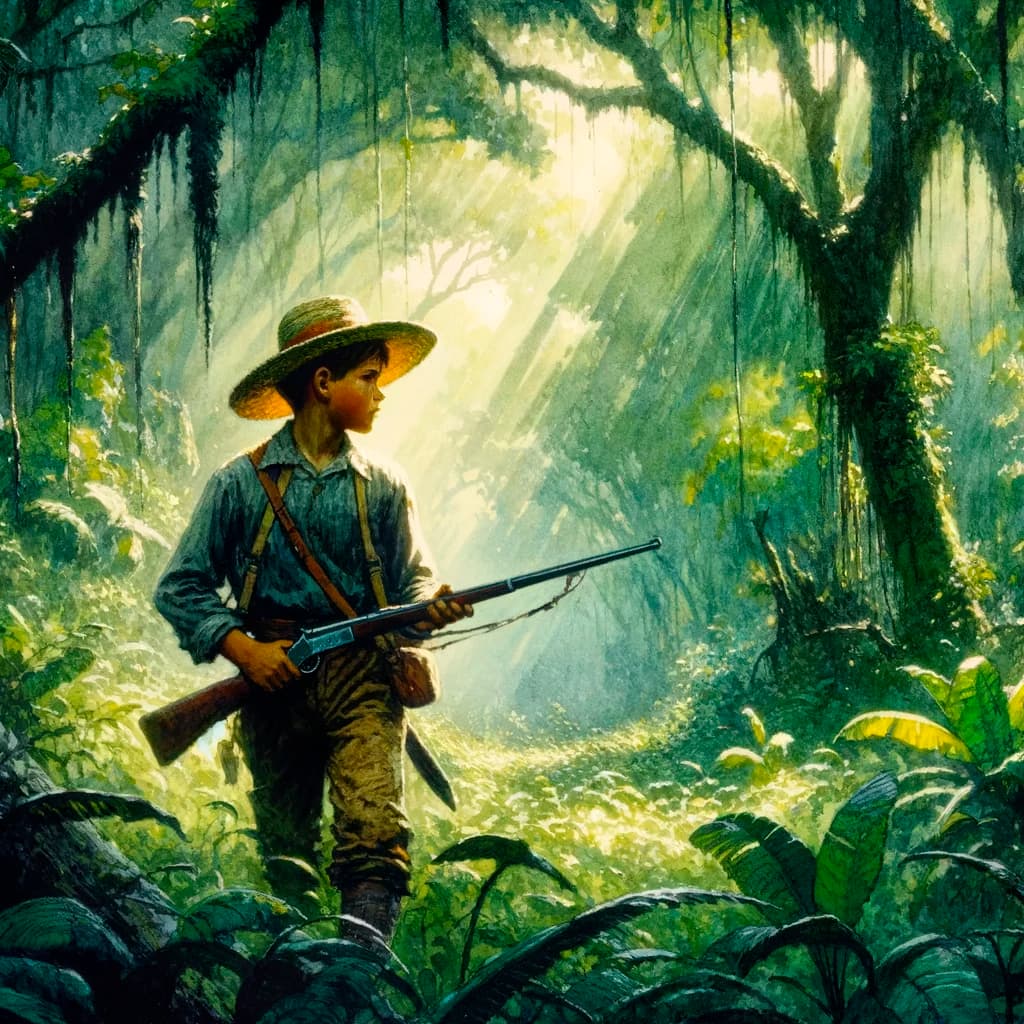Horacio Quiroga’s short story “The Son” transports us to the heart of the Misiones jungle on a hot summer day. The story centers on the relationship between a widowed father and his teenage son, who has grown up in this jungle environment, learning to navigate its beauties and dangers. As the young boy embarks on a hunting adventure, the father, scarred by loss and protective love, confronts his fears and hopes. In this narrative, Quiroga skillfully interweaves the exploration of family ties, maturity, and the inescapable confrontation with life’s challenges. The plot unfolds in a growing tense climate, where nature serves as a setting and becomes a crucial character that reflects and amplifies the story’s central themes.
Tabla de contenidos
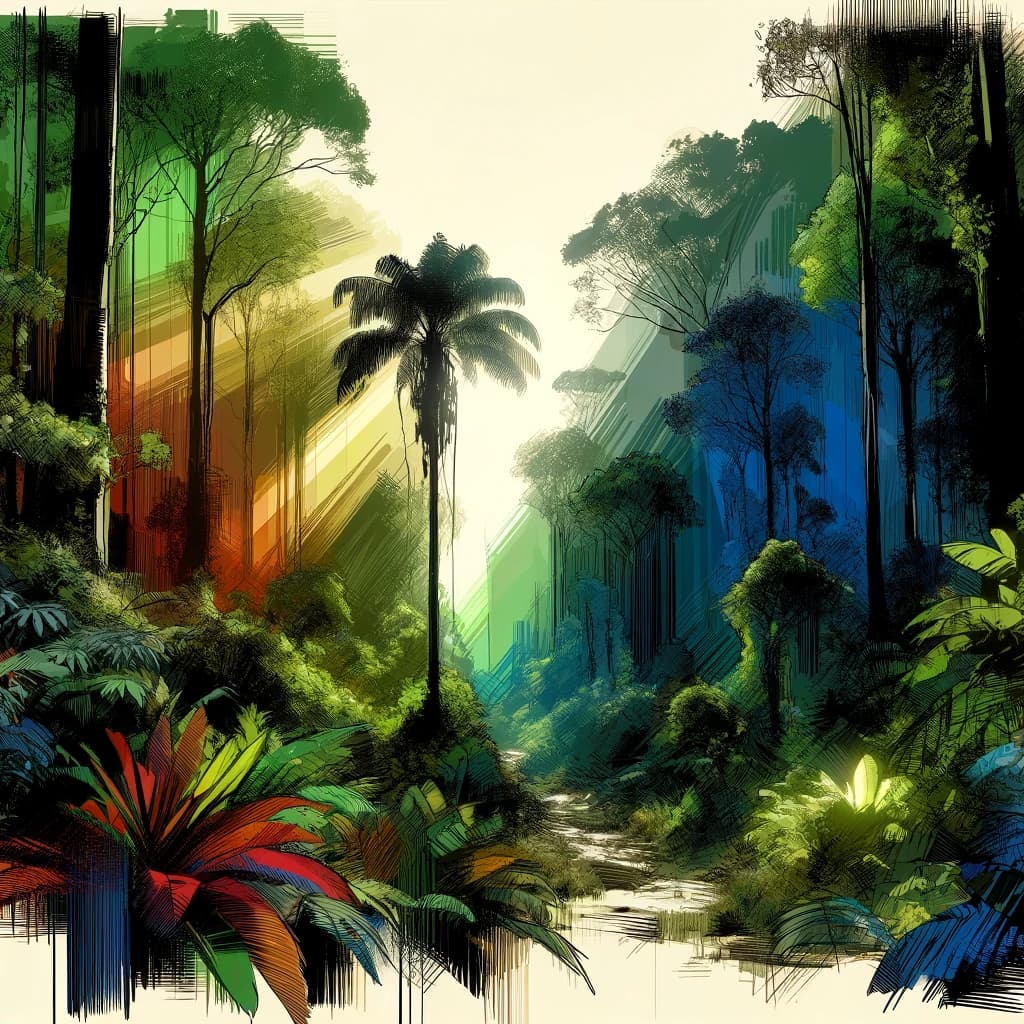
Summary of “The Son” by Horacio Quiroga
“The Son,” a short story by Uruguayan writer Horacio Quiroga, was published in La Nación on January 15, 1928, and later collected in the 1935 anthology of short stories Más allá. Set in Misiones’s warm and exuberant environment, it introduces us to the life of a widowed father and his thirteen-year-old son, portraying a deep bond marked by trust and love. The story begins on a summer day when the father, devoted to his chores, allows his son to go hunting, urging him to return for lunch. The boy, educated from an early age in handling weapons and respect for danger, sets off with his shotgun, leaving the father immersed in his chores but mentally following the boy’s journey.
While working, the father reflects on the education he has given his son based on autonomy and risk awareness. This education has occurred in the context of the father’s struggle against his nightmares and fears, exacerbated by his widowed status and poor health. Despite his worries, the father feels calm and secure on this day.
However, the father’s peace of mind is interrupted when he realizes that his son has not returned at the appointed time, and he begins to worry. Anxiety grows as he remembers a gunshot heard hours earlier and fears the worst. The father leaves his workshop and goes into the bush, desperately searching for his son while fighting the fear of finding him wounded or dead.
The search becomes a torment, exacerbated by the father’s hallucinations, who imagines on several occasions seeing his son injured or dead. The father’s anguish reaches its climax when, in a moment of desperation, he calls out for his son, breaking his silence and admitting his fear of loss.
Surprisingly, the son appears safe and sound, explaining his tardiness by following some herons. The father’s relief is immense, and they both return home, where the father, though physically exhausted and emotionally drained, is happy to have his son safe.
However, in a heartbreaking and surprising ending, it is revealed that it was all the father’s hallucination. In reality, his son died that morning when entangled in barbed wire, his shotgun accidentally discharged. The father, unable to face this tragic reality, imagines that his son is alive and by his side when he is alone, immersed in a happiness that is only the fruit of his fantasy.
Main characters in “The Son”.
In “The Son,” the plot centers on two characters: the father and his son. The play lacks significant supporting characters, underscoring the depth of the relationship between the two and their isolation from the outside world.
The father: This character is a widower who has taken full responsibility for raising his son in a jungle environment. His love for his son is immense, reflected in his constant concern for his safety. This love, however, is mixed with a deep fear, exacerbated by the nightmares he suffers in which he visualizes his son in dangerous situations. The father is marked by personal tragedy, influencing his perspective and interaction with his son. He is a complex character whose facets include tenderness, fear, and an internal struggle between confidence and anxiety. The loss of his wife and the isolation in which he lives amplify his emotional vulnerability.
The son: Although young, the son demonstrates maturity and skill in hunting and knowledge of the jungle environment, skills instilled by his father. He is a character who represents youthful innocence and confidence, as well as a strong sense of responsibility, as seen in his promise to return home for lunch. His love of hunting is a hobby and a bond that unites him with his father. The son is a character who embodies the vitality and adventurous spirit of youth, but he is also vulnerable to the dangers of the environment around him.
The relationship between father and son is the central axis of the story. Through them, Quiroga explores themes of paternal love, trust, loss, and the fragility of human life in the face of nature. Although central to the plot, the son is mainly a catalyst for exploring the father’s psyche. The absence of supporting characters reinforces the isolation of the two, highlighting their mutual dependence and the intensity of their relationship.
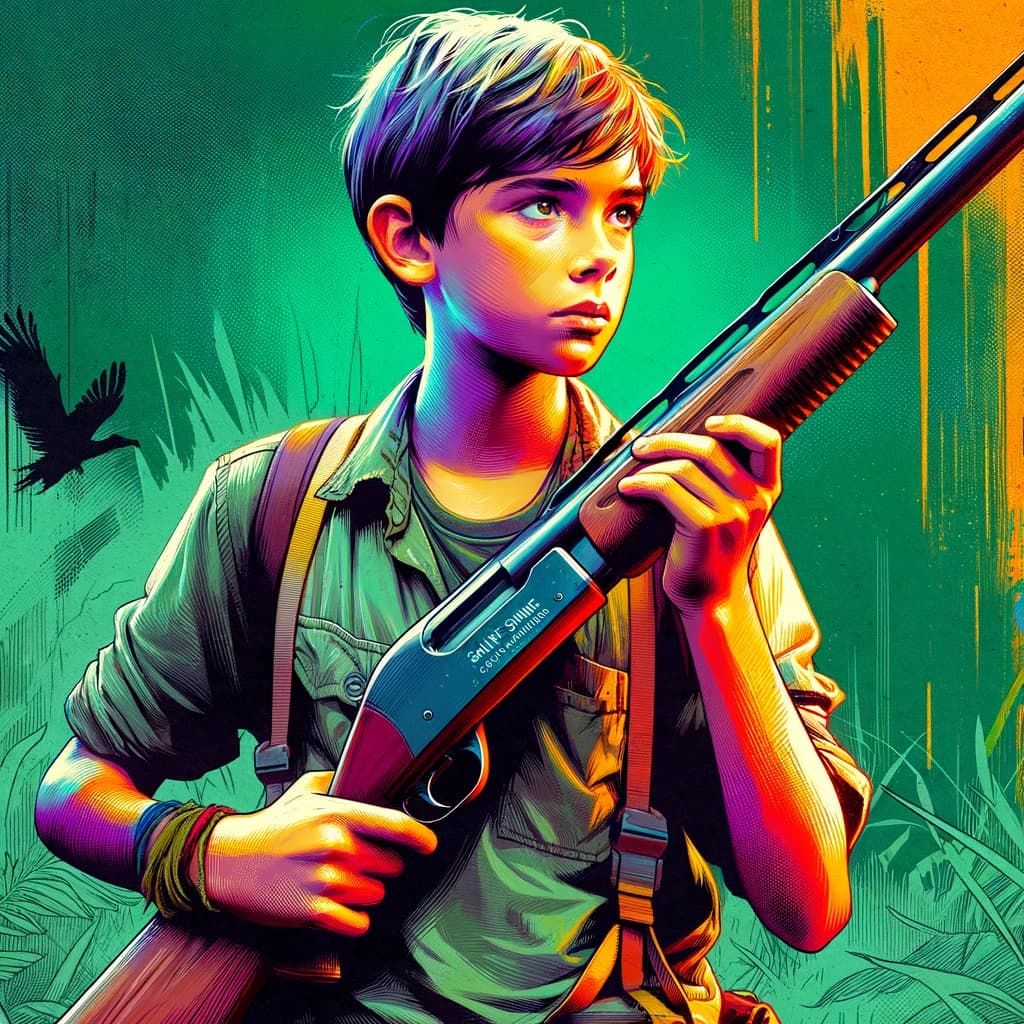
The setting of the story
“The Son” is set in the jungle region of Misiones, Argentina, known for its lush vegetation, tropical climate, and diverse fauna. This geographical location is not merely decorative but fundamental for the plot’s development and the characters’ deepening.
Physical setting: The story takes place in the heart of the jungle, which Quiroga describes in great detail. This jungle setting is crucial, as it is the son’s home and hunting ground. The meticulous description of the flora and fauna, as well as the characteristics and dangers of the jungle, not only sets the scene but also emphasizes the son’s familiarity with this environment. This familiarity contrasts with the father’s fear and worry. With its sounds, smells, and textures, the jungle becomes another character in the story, a living, pulsating element that directly influences events.
Influence on the plot: The jungle environment is a determining factor in the narrative. The son’s knowledge of the jungle and hunting skills are fundamental to understanding his confidence and autonomy. On the other hand, the jungle also represents the fear and anxiety of the father, who is constantly worried about the dangers his son might face. The density and vastness of the jungle make the father’s concern tangible and justified while intensifying his sense of helplessness and isolation as he searches for his son.
Temporal setting: The story takes place during a summer day, marked by intense heat and an oppressive atmosphere. This temporal detail is not trivial; it contributes to the tension and urgency permeating the narrative. The oppressive heat symbolizes the father’s growing anguish and the intensity of his emotions.
Influence on the characters: The jungle environment and climate are integral to the father’s and son’s lives, shaping their experiences and relationships. For the son, the jungle is a place of adventure and freedom; for the father, it is a source of fear and anxiety. This duality highlights the contrast between youth and maturity, confidence and worry, life and death.
Themes addressed by Horacio Quiroga in “The Son.”
In “The Son,” Quiroga addresses several central themes that intertwine to create a rich and complex narrative. These themes are not only crucial to the development of the plot but also offer a profound insight into the human condition.
Paternal love and loss: One of the most prominent themes is the father’s unconditional love for his son. This love manifests in his constant concern for the child’s safety and deep emotional connection to him. However, this love also leads to an overwhelming fear of losing him, a fear that is tragically realized at the end of the story. The loss of the son is devastating, revealing how the most profound love can lead to the greatest of tragedies.
Nature and survival: The jungle of Misiones is a character representing both beauty and danger. The son’s ability to navigate this hostile environment reflects his growth and autonomy. However, the exact nature that provides freedom and adventure becomes a deadly scenario, symbolizing the fragility of life and the thin line between survival and death.
Reality vs. illusion: Throughout the story, the father experiences visions that confuse reality with fantasy. This theme is explored through his internal struggle and his inability to accept the loss of his son. The narrative challenges the reader to discern between the real and the imaginary, culminating in the heartbreaking ending where the father’s ultimate illusion is revealed as a denial of tragic reality.
Isolation and loneliness: The story unfolds in an isolated setting, where father and son live apart from society. This physical isolation also reflects emotional isolation, especially in the case of the father, whose loneliness intensifies after the death of his son. The father’s loneliness is a reflection of his internal struggle and his inability to cope with reality without his son.
Maturity and innocence: The son represents the innocence and confidence of youth, while the father symbolizes maturity and knowledge of the world’s dangers. This contrast highlights the son’s transition to autonomy and adulthood and the father’s vulnerability despite his experience and maturity.
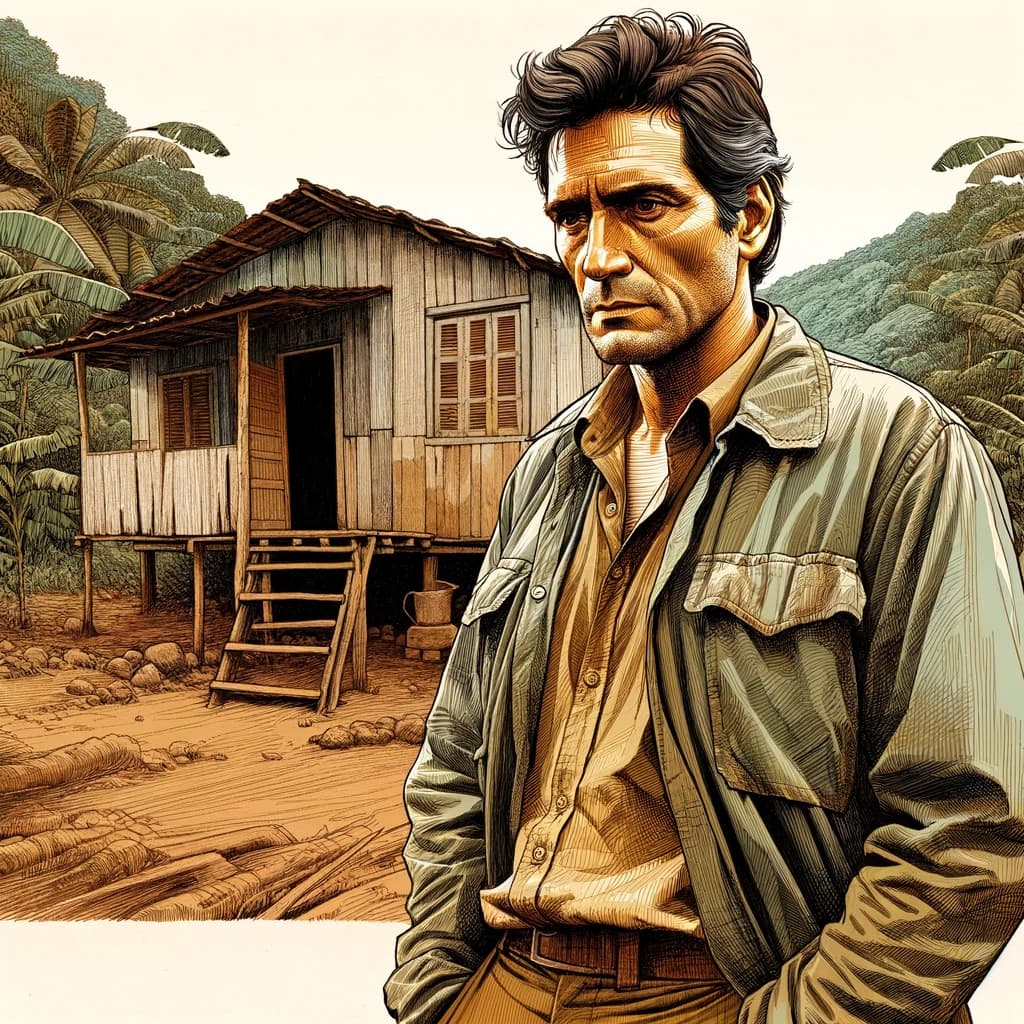
Narrative point of view: Who narrates the story in “The Son”?
Horacio Quiroga’s “The Son” is narrated in the third person by an omniscient narrator. This narrative choice significantly impacts how the reader perceives the story and the characters.
Third-person omniscient: The narrator does not participate in the story’s events but observes and relates them from an outside perspective. This omniscience allows him to present the father’s thoughts and feelings in detail and accurately describe the son’s actions and surroundings. The narrator’s ability to delve into the father’s psyche and reveal his fears, hopes, and hallucinations is critical to understanding the story’s plot and emotional impact.
Reader insight: Using an omniscient narrator creates distance between the reader and the characters, allowing for a more objective and complete view of events. This perspective helps readers understand the complexity of the father’s emotions and the nature of his hallucinations. At the same time, it keeps the reader in an observer’s position, intensifying the impact of the story’s final twist, when the father’s reunion with his son is revealed to be an illusion.
Plot impact: The omniscient point of view is critical to building tension and suspense in the story; by learning of the father’s inner fears while at the same time following the son’s movements in the jungle, the reader is brought into a state of uncertainty and anticipation. This approach heightens the reader’s surprise and shock at discovering the son’s true fate at the end of the story.
Writing techniques used by Quiroga in the story.
Detailed description: Quiroga uses detailed descriptions of the jungle environment to immerse the reader in the story’s world. These descriptions serve not only to establish the setting but also to create a dense, palpable atmosphere that reflects the emotional state of the characters, particularly the father.
Use of symbolism: The jungle itself is a powerful symbol in the story. It represents wild and unchecked life, as well as danger and death. This symbolism is intertwined with the plot, highlighting the son’s vulnerability and the father’s concern. The Saint-Etienne shotgun symbolizes the son’s transition to maturity and connection to the father.
Likewise, the sweltering heat of the day symbolizes the intensity of the emotions and the growing tension in the story. This device reinforces the oppressive atmosphere and contributes to the anguish that builds toward the end.
Nonlinear Narrative and Flashbacks: Quiroga intersperses memories and thoughts of the father in the narrative. This nonlinear approach allows the reader to understand better the depth of the relationship between the father and son and the magnitude of the final tragedy.
Building tension and suspense: Quiroga creates a sense of tension and suspense through carefully controlled pacing and precise details. The reader is taken through a series of emotions, from initial tranquility to anxiety and panic, culminating in the final revelation.
Use of irony and plot twist: The end of the story is a clear example of tragic irony. The father’s hallucination, where he sees his son return safely, contrasts cruelly with the reality of the boy’s death. This plot twist surprises the reader and intensifies the story’s emotional impact.
Internal focus: Although the narrator is omniscient, there is a strong focus on the father’s thoughts and feelings. This internal focus allows Quiroga to explore the complexities of the father’s mind, his fears, his love, and his denial of reality.
Historical and cultural context
Horacio Quiroga’s “The Son” is set in a historical and cultural context relevant to understanding its meaning and scope. Quiroga, born in 1878 in Uruguay and died in 1937, was a pioneer of Latin American literature, and his life and work are deeply marked by the circumstances of his time and place.
Early 20th Century in Latin America: This period was characterized by significant political, social, and cultural transformations. Latin America was experiencing changes in its socioeconomic structure with the consolidation of the republics and the beginning of modernization and urbanization. However, these transformations were accompanied by a strong contrast between urban development and rural realities, often marked by isolation and the harshness of life in less developed areas.
The Jungle of Misiones: Quiroga spent much of his life in the jungle of Misiones, Argentina. This jungle environment, almost mythical in its beauty and danger, is a recurring setting in his work. The jungle provides the physical backdrop for his stories and symbolizes his characters’ inner conflicts, struggles, and fears. In “The Son,” the jungle of Misiones reflects the duality between civilization and wilderness, a common theme in Latin American literature of the time.
Literary influences: Quiroga was influenced by authors such as Edgar Allan Poe and Rudyard Kipling, and his work often reflects an interest in the macabre and the psychological, as well as a fascination with nature and its dangers. This interest is evident in “The Son,” where he combines detailed environmental realism with a deep exploration of the human psyche.
Quiroga’s personal experiences: Quiroga’s life was marked by personal tragedies, including the untimely death of his father (who died in a hunting accident), his stepfather, as well as the suicide of his first wife. These experiences of personal loss and tragedy are reflected in his works, where he often explores themes of death, madness, and despair.
Modernism and realism: Quiroga is often associated with modernism and realism in the literary realm. “The Son” reflects this combination, with its lyrical style and focus on detailed and realistic depiction of the environment, along with a reflective and often somber portrayal of his characters.
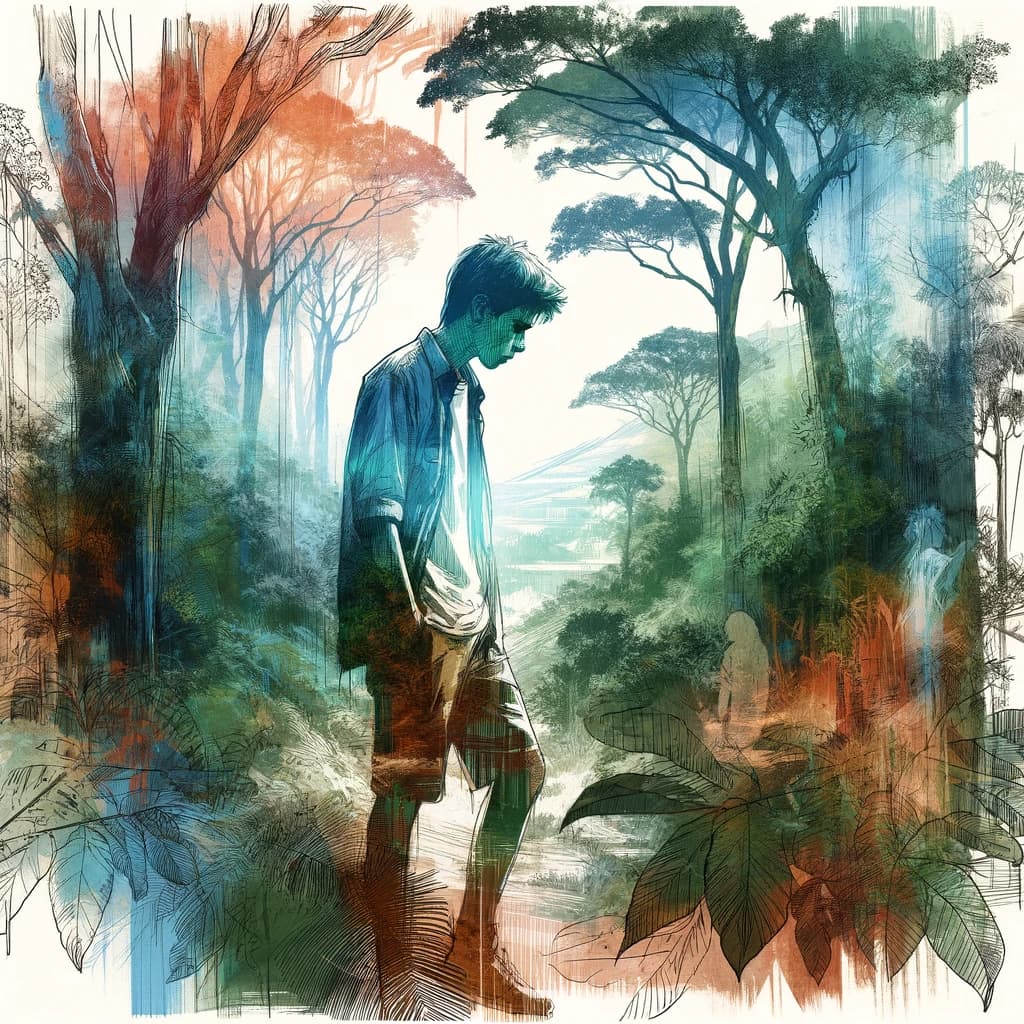
Conclusions
Horacio Quiroga’s “The Son” is a Latin American short story masterpiece, where narrative economy and thematic depth intertwine to create an unforgettable literary experience. This tale, set in the jungle of Misiones, is an eloquent example of Quiroga’s ability to fuse detailed realism with psychological exploration, thus establishing a continuous dialogue between the human being and his environment.
The story stands out for its ability to build an oppressive and tense atmosphere in which paternal love confronts the deepest fears and the inevitable tragedy. The jungle, with its omnipresent and overwhelming presence, becomes a mirror of the father’s emotional state, offering a poetic and, at the same time, ruthless reflection of the fragility of human existence. The duality between the beauty of nature and its imminent danger manifests on every page, enriching the narrative and endowing it with a remarkable symbolic density.
In terms of literary technique, Quiroga demonstrates exceptional mastery in the handling of suspense and plot twists. The story, told in a clear but meaningful style, carries the reader through a whirlwind of emotions, culminating in an ending that is both surprising and deeply moving. The tragic irony of the conclusion not only shocks the reader but also invites reflection on the nature of reality, perception, and the denial of pain.
This story is recommended for readers interested in Latin American literature, mainly works that explore the relationship between humans and nature and internal psychological conflicts. It will also interest those who enjoy stories that combine the beauty of detailed description with profound psychological and emotional inquiries. Because of its thematic richness and narrative mastery, “The Son” is essential for understanding not only Horacio Quiroga’s literary canon but also for appreciating the evolution of the modern short story in the Latin American context.
